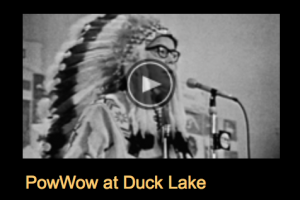I must say that this weblog assignment has been vital to my learning in the class. Through my research and “web-travels”, I went down many necessary rabbit holes and discovered amazing resources. I have also learned through the posts of my peers. This is a site I will bookmark and continue to refer to throughout my career as an educator.
University of Saskatchewan Indian Teacher Education Program (ITEP)
Many of the readings and videos in the last two modules spoke to the need for trained teachers in Northern areas who were a part of the community and made long lasting connections with students. The students in the videos spoke about how important it was to have Indigenous teachers from their very own communities. As I watched, I wondered how Canadian post-secondary institutions were addressing this need through their programming. I found a great example from the University of Saskatchewan that supports Indigenous students who would like to become teachers. Applicants are encouraged through a coordinator and also flexible admission for new and mature students. The curriculum integrates subject matter that will prepare teachers to work with Indigenous students. I came across another related page that showed how U of S also offers an Indigenous Languages Certificate for any educator to enrich their education.
Think Indigenous Podcast
The Think Indigenous Podcast comes out of the ITEP program (linked in above posting) at the U of S. The podcast is situated at the intersection of “digital media, education, and Indigenous storytelling” and features many interesting and knowledgeable guest speakers. I just discovered this podcast and will need to catch up on past episodes, but it is incredibly relevant to this class as it is all about Indigenous education. A description on its websites promises that the program “peels back the layers, shines a light on and celebrates best practices in Indigenous education!”. It is available for free on many platforms and there is even an accompanying conference that people can attend. I am very impressed at the Indigenous education initiatives coming out of the University of Saskatchewan!
Redefining How Success is Measured in First Nations, Inuit, and Metis Learning- Canadian Council on Learning
This document is about 10 years old but the principles in it are very relevant to today when we are looking at strategies to assist with Indigenizing curriculum. It is also very applicable to any level in education (K-post secondary) that serves indigenous students. The document outlines best practices in several areas: understanding FNMI learners, redefining how Indigenous success in education is measured and looking at holistic learning models and forms of assessment. Place based learning is explored throughout the document, as well as the need to integrate community, language, and Elders into education. The document is full of statistics, quotes from educators, evidence-based recommendations and great graphics. It really brings many of the topics we have explored in our ETEC class together!
First Peoples Principles of Learning Blog Site
This resource is a WordPress site created by BC educator Jo Chrona. For those of you who use Twitter, Jo (@luudisk) is definitely a must-follow as she posts a lot on the topic of Indigenous education and often shares her viewpoint on issues as well as some rich resources. Her blog site is equally full of tools for educators, and is a thoughtful compilation of research, resources, professional development activities and links to other initiatives in BC and Canada. A quick look at her reference page demonstrates many of the readings that we did in our ETEC class- there is no mention but I wondered if this was possibly an assignment related to this class as it was posted in 2014- worth looking at for any Canadian educator!
Elder in The Making (Film/Series)
Although this resource doesn’t really fit with the theme of the other items in my weblog, I could not resist the need to share it with my classmates as I enjoyed viewing it so much and would recommend it to anyone. Elder in the making is a film (broken into 6 episodes- and free to watch on YouTube) that showcases the journey of Chris Hsiung, a Chinese Canadian from Calgary and CowboyX, a young Blackfoot man from southern Alberta, and their quest to discover their own heritage and how someone comes to be an Elder. One thing I have learned in this class is that in order to understand other cultures, we must first do a self-examination of our own relationship to culture. This documentary is stunningly beautiful, honest, emotional, and educational. In the final episode, an unexpected event leaves Chris and Cowboy to mourn the loss of a friend, yet is inspirational and renews hope for the future. This film is created by local artists and really brings together what we’ve learned in our ETEC class and shares it through the use of technology and storytelling. I ended up watching all the episodes in one day- a must see!
